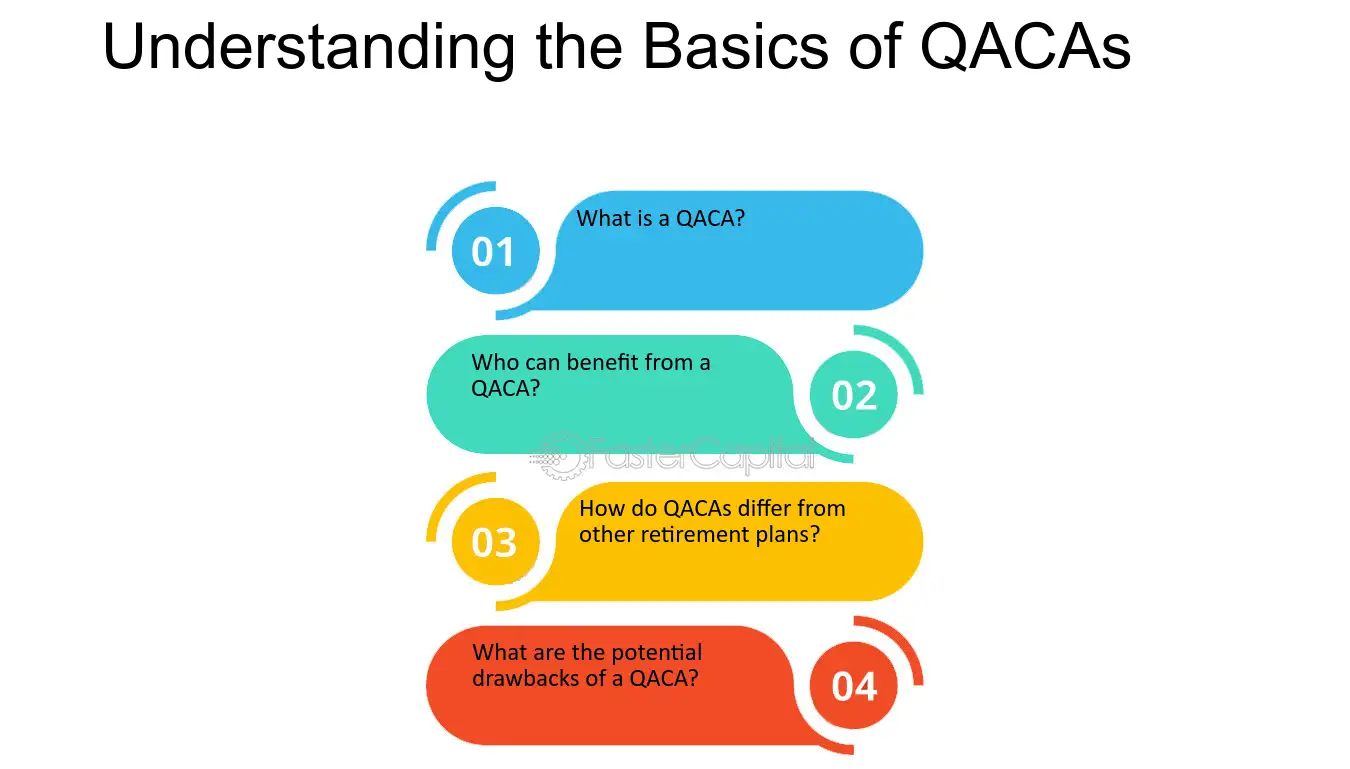What is a Qualified Automatic Contribution Arrangement (QACA) and How Does it Impact Retirement Planning?
A Qualified Automatic Contribution Arrangement (QACA) is a retirement plan feature that encourages employees to save for retirement by automatically enrolling them in the plan and increasing their contribution rate over time. This arrangement is designed to help employees who may not be actively saving for retirement or who may be saving at a lower rate than necessary.
One of the key benefits of a QACA is that it helps employees overcome the inertia of not saving for retirement. By automatically enrolling employees, it removes the need for them to take action to start saving. Research has shown that automatic enrollment significantly increases retirement savings rates.
Another benefit of a QACA is that it helps employees save more over time. The automatic escalation feature gradually increases the contribution rate, allowing employees to save more without having to actively make the decision to do so. This can result in a significant increase in retirement savings over the long term.
QACAs also provide certain protections for employers. By meeting certain requirements, such as providing a minimum employer contribution or offering a vesting schedule, employers can qualify for safe harbor provisions. These provisions can help protect employers from certain fiduciary responsibilities and compliance testing requirements.
A Qualified Automatic Contribution Arrangement (QACA) is a retirement plan feature that encourages employees to save for their future by automatically enrolling them in the plan and setting a default contribution rate. It is designed to increase retirement savings participation rates and help employees build a nest egg for their golden years.
Here are some key points to understand about QACAs:
- Automatic Enrollment: QACAs automatically enroll eligible employees into the retirement plan, unless they choose to opt-out. This removes the barrier of inertia and encourages employees to start saving for retirement.
- Default Contribution Rate: QACAs set a default contribution rate for employees who are automatically enrolled. This rate is typically a percentage of their salary, such as 3% or 6%. Employees have the option to change this rate or opt-out of the plan altogether.
- Safe Harbor: QACAs are structured as safe harbor plans, which means they automatically meet certain non-discrimination testing requirements set by the Internal Revenue Service (IRS). This helps employers avoid penalties and ensures that the plan benefits all employees, not just highly compensated individuals.
- Automatic Escalation: Many QACAs also include an automatic escalation feature, which gradually increases the default contribution rate over time. This helps employees save more for retirement without having to actively make changes to their contribution rate.
- Vesting: QACAs may have a vesting schedule, which determines how long an employee must work for the company before they are fully entitled to their employer’s contributions. This encourages employee retention and loyalty.
The Benefits of a Qualified Automatic Contribution Arrangement for Retirement Planning
1. Automatic Enrollment

One of the key benefits of a QACA is automatic enrollment. This means that employees are automatically enrolled in the retirement savings plan unless they choose to opt-out. Automatic enrollment helps individuals overcome inertia and encourages them to start saving for retirement from the beginning of their employment. By making retirement savings the default option, a QACA ensures that individuals are taking steps towards a secure financial future.
2. Increased Participation

A QACA also promotes increased participation in retirement savings plans. By automatically enrolling employees, more individuals are likely to participate in the plan. This is especially beneficial for those who may not have considered saving for retirement or who may have been hesitant to start. Increased participation means more individuals are building their retirement nest egg, which can lead to greater financial security in the long run.
3. Employer Contributions
In addition to automatic enrollment and increased participation, a QACA often includes employer contributions. These contributions can come in the form of matching contributions or non-elective contributions. Matching contributions are when the employer matches a percentage of the employee’s contributions, while non-elective contributions are made regardless of whether the employee contributes. These employer contributions can significantly boost an individual’s retirement savings and provide additional incentives for employees to participate in the QACA.
4. Vesting Period
Another benefit of a QACA is the vesting period. The vesting period refers to the amount of time an employee must work for the company before they are entitled to the employer’s contributions. This ensures that employees who stay with the company for a longer period of time receive the full benefits of the employer’s contributions. The vesting period encourages employee loyalty and provides an additional incentive for individuals to stay with their employer, knowing that their retirement savings will be rewarded.
5. Tax Advantages
Finally, a QACA offers tax advantages for individuals. Contributions made to a QACA are typically tax-deferred, meaning they are not taxed until they are withdrawn during retirement. This can provide individuals with immediate tax benefits, as contributions are deducted from their taxable income. Additionally, the growth of investments within the QACA is tax-deferred, allowing individuals to potentially accumulate more wealth over time.

Emily Bibb simplifies finance through bestselling books and articles, bridging complex concepts for everyday understanding. Engaging audiences via social media, she shares insights for financial success. Active in seminars and philanthropy, Bibb aims to create a more financially informed society, driven by her passion for empowering others.
